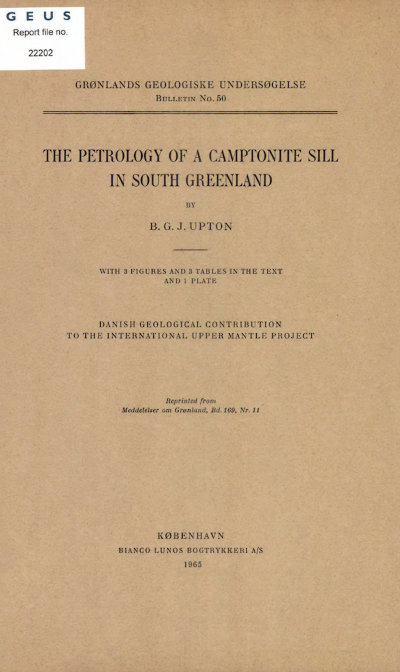The petrology of a camptonite sill in South Greenland
DOI:
https://doi.org/10.34194/bullggu.v50.6584Abstract
A number of small camptonite intrusions were emplaced as dykes and sills at a late stage in the magmatic history of the south Greenland alkaline province in the vicinity of Narssaq and Tugtutôq. Crystal fractionation in one 3 m thick sill lead to the production of a water- and carbon dioxide-rich residuum in the central part of the intrusion. In this central part the concentration and form of ocelli carrying analcite, calcite and zeolites suggests the separation of a vapour phase towards the completion of crystallisation. It is thought that the initial intrusion was of the regional alkali basalt magma modified by an addition of water, carbon dioxide, alkalics and calcium. Kimberlitic or carbonatitic magmas, or alternatively, syenite magma residuals are regarded as possible sources for this volatile-rich increment.
Downloads
Published
Issue
Section
License
This article is distributed under a CC-BY 4.0 licence, permitting free redistribution and reproduction for any purpose, even commercial, provided proper citation of the original work. Author(s) retain copyright over the article contents.


